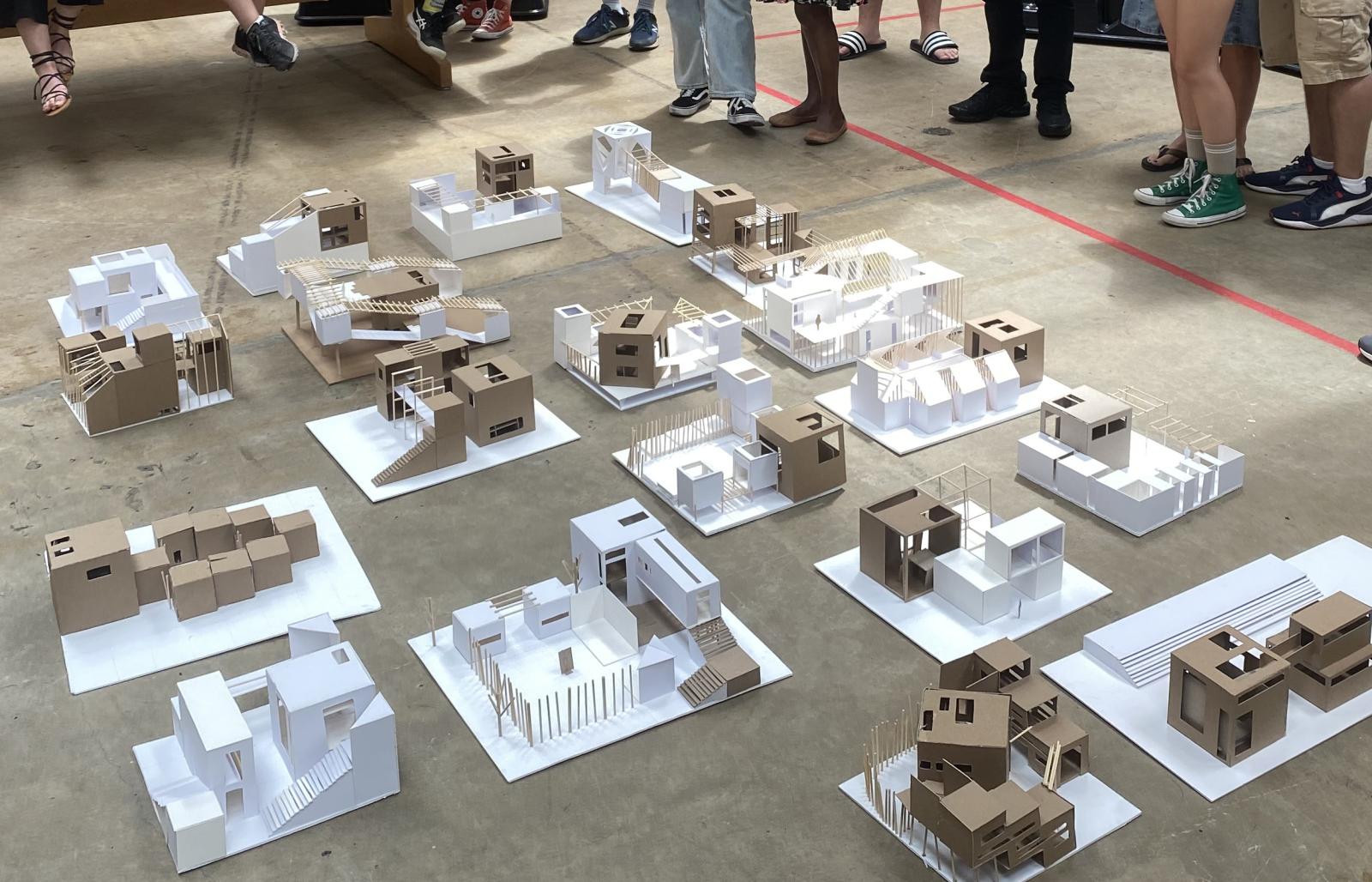Discovering Architecture, a three-week program for high school students grades 9-12, returned this summer after a two-year pandemic hiatus, bringing buzz back to the Great Space as students sketched, built and presented their first projects as fledgling architecture students. Part of the university-wide living-learning summer experience Terp Young Scholars, Discovering Architecture is a hands-on introduction to the college experience, studio life and the techniques that make beautiful spaces.
“It’s basically a crash course in architecture,” said Clinical Assistant Professor Michael Abrams, who led this year’s program with the help of graduate students Samantha Jamero and Stephen Duranske. “They get a taste of what it’s like to be an architect, but even if they gravitate to another field, this course gives them some very good tools for seeing the world differently.”
Wielding X-Actos and T-squares, the students were immersed in hands-on learning and guided studio time to practice the skills of an architect, such as spatial sequencing, critical thinking and programming. Smaller exercises in technical drawing and abstraction culminated with a final assignment: a small art gallery assembled from nine cubes in a configuration and style that brings each student’s idea to life.
“The students were really thinking outside the box and pushing the boundaries; it was really fun to watch,” said Jamero. “Even though this class is only three weeks long, I can already see their progress from day one.”
The popular program, which historically attracts upwards of 60 high school students a summer, had been running continuously since the early 1990s until COVID-19 shuttered the university in 2020. With campus life returning to normal, MAPP leadership is exploring other opportunities to engage kids early, including placemaking camps and hackathons for middle and high school students, with the hope that a passion for their built environment eventually leads them back to Maryland.
“I really enjoy art and was curious about architecture as a possible major for me,” said a high school senior from Cockeysville, Md., who found the program online. When asked if the experience influenced her plans for after high school, she didn’t hesitate.
“Oh, I’m definitely going into architecture—and hopefully, I’ll be back!”

